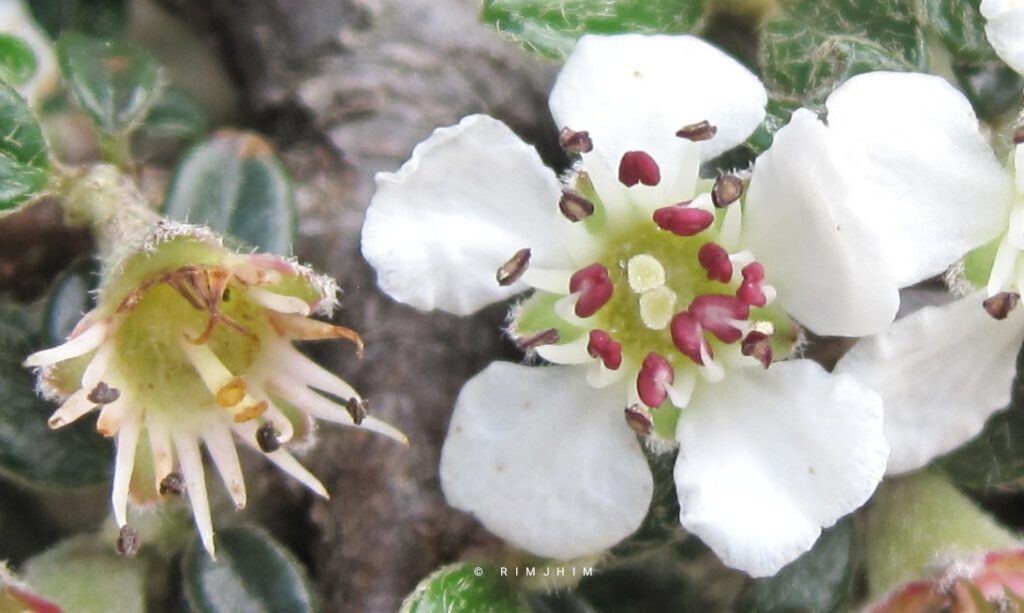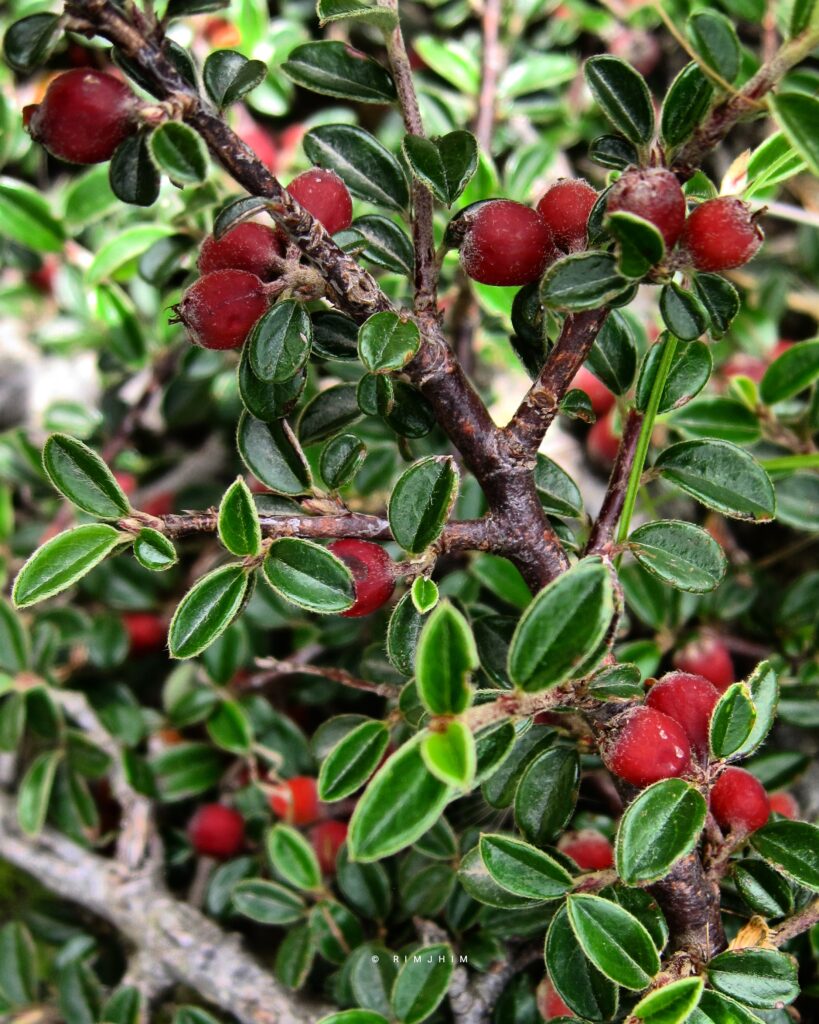The Common name: Entire-Leaf Cotoneaster
Botanical name:Cotoneaster integrifolius
Family:Rosaceae (Rose family)
Synonyms: Cotoneaster brandisii, Cotoneaster prostratus, Cotoneaster thymifolius
Kingdom |
Plantae – plantes, Planta, Vegetal, plants | ||
| Subkingdom | Viridiplantae – green plants | ||
| Infrakingdom | Streptophyta – land plants | ||
| Superdivision | Embryophyta | ||
| Division | Tracheophyta – vascular plants, tracheophytes | ||
| Subdivision | Spermatophytina – spermatophytes, seed plants, phanérogames | ||
| Class | Magnoliopsida | ||
| Superorder | Rosanae | ||
| Order | Rosales | ||
| Family | Rosaceae – roses | ||
| Genus | Cotoneaster Medik. | ||
| Species | Cotoneaster integrifolius (Roxb.) G. Klotz – entire-leaved cotoneaster |
Entire-Leaf Cotoneaster is a low shrub, which is often found spread over rocks in Himalayan region. It is closely related to Rockspray Cotoneaster. Leaves are small, obovate-oblong, with a rounded tip. This feature distinguishes it from Rockspray Cotoneaster which has elliptic leaves with pointed tips. Leaves are dark green above, woolly beneath. Flowers are pink in bud, white later, about 8 mm across, generally borne singly. Fruits are round red berries, and the plant makes a spectacular display when in fruit. Entire-Leaf Cotoneaster is found in the Himalayas, from Himachal Pradesh to SW China, at altitudes of 1800-3500 m. Flowering: May-June.
-

Cotoneaster integrifolius -

Cotoneaster integrifolius
Leave a Reply